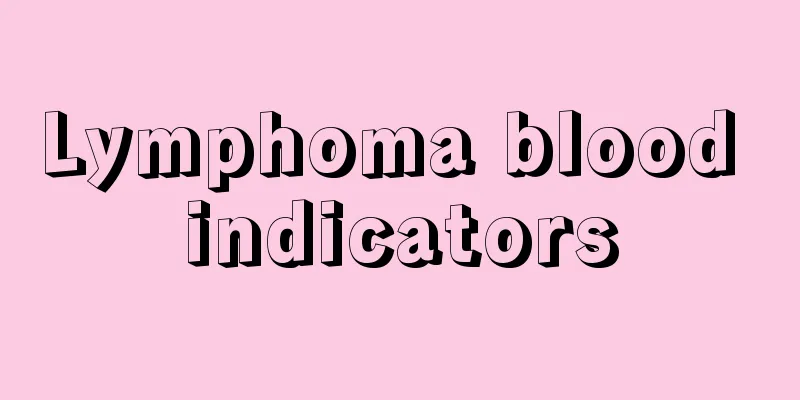Lymphoma blood indicators

|
Blood tests can detect many abnormal conditions in the human body. For example, when a girl suspects that she is pregnant, she can confirm it through a blood test. At the same time, lymph, as the most important immune tissue in the human body, is also prone to develop into lymphoma. If you suspect you have lymphoma, you should go to the hospital for a check-up in time. During the examination, doctors usually ask patients to take blood tests, so what are the blood indicators of patients with lymphoma? examine 1. Routine blood test and blood smear Routine blood tests are generally normal and may be combined with anemia of chronic disease; HL may show an increase in PLT, WBC, and eosinophilia; aggressive NHL invading the bone marrow may cause anemia, a decrease in WBC and PLT, and lymphoma cells may appear in the peripheral blood. 2. Bone marrow smear and biopsy Bone marrow involvement is rare in HL. NHL invades the bone marrow. Lymphoma cells can be seen in bone marrow smears. The cells are large in size, rich in chromatin, gray-blue in color, and obviously abnormal in morphology. A "tailing phenomenon" can be seen. Lymphoma cells ≥ 20% are lymphoma leukemia. Bone marrow biopsy can show lymphoma cell aggregation and infiltration. Bone marrow smears of some patients may show increased hemophagocytosis and hemophagocytosis, which is more common in T-cell NHL. 3. Blood biochemistry Increased LDH is related to tumor burden and is an indicator of poor prognosis. HL may be accompanied by increased ESR and ALP. 4. Cerebrospinal fluid examination Patients with moderately or highly aggressive NHL clinical stage III/IV may have central nervous system involvement or central nervous system symptoms and require cerebrospinal fluid examination, which is manifested by increased cerebrospinal fluid pressure, increased biochemical protein, and increased number of conventional cells, mainly mononuclear cells. Lymphoma cells may be found in pathological examination or flow cytometry. 5. Histopathological examination The basic pathological morphological change of HL is the presence of diagnostic RS cells and their variants in a mixed proliferation background of various inflammatory cells. Immunohistochemical characteristics: classical type: CD15+, CD30+, CD25+; nodular lymphocyte-predominant type: CD19+, CD20+, EMA+, CD15-, CD30-. NHL lymph node or tissue pathology shows destruction of normal lymph node or tissue structure, scattered or diffuse infiltration of tumor cells. Different pathological types have their own unique pathological manifestations and immune phenotypes. 6. TCR or IgH gene rearrangement Can be positive. |
>>: Causes of lymphatic blockage
Recommend
The most important health care for colon cancer
Colon cancer is a common tumor disease. If we wan...
What are the effective methods to remove flat warts?
Speaking of flat warts, I believe everyone is fam...
Is the cure rate of stage II gallbladder cancer high?
Generally speaking, the cure rate for stage II ga...
How to preserve fresh mushrooms for a long time
There are many ways to preserve fresh mushrooms. ...
What is megacolon?
Many people may not know what megacolon is. In fa...
How can thin people gain weight quickly?
It is difficult for fat people to lose weight, bu...
What are the nutritional benefits of okra
Okra is a food introduced to my country from fore...
Many wrinkles on face
Most female friends are particularly afraid of wr...
How to relieve the symptoms of advanced laryngeal cancer
Laryngeal cancer is a malignant tumor originating...
Is Maifan stone pot good?
A medical stone pot is actually a pot that contai...
Why does eating pasta cause stomach acid
In China, the meals on the table are all about ha...
What skin color is flax suitable for
If an exquisite makeup is a must for fashionable ...
What medicine is good for small cell lung cancer
There are many types of cancer, including uterine...
Purpose of arterial blood sampling
In order to cooperate with the treatment of some ...
What are the main characteristics of colon cancer
What are the main characteristics of colon cancer...









